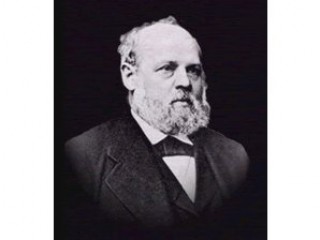
Heinrich Geissler biography
Date of birth : 1815-05-26
Date of death : 1879-01-24
Birthplace : Igelshieb, Germany
Nationality : German
Category : Science and Technology
Last modified : 2011-10-03
Credited as : Inventor, Physicist,
0 votes so far
The inventions of German glassblower and self-taught physicist Heinrich Geissler include a mercury displacement pump, which allowed creation of a vacuum with 1/100,000 the atmosphere of ordinary air, and the Geissler tube, an artfully twisted glass cylinder which produces light when rarified gas is subjected to an electrical current. The mercury vacuum pump was crucial to subsequent development of more advanced scientific theory and instruments including cathode rays and X-rays, and was used by Thomas Edison in designing his first incandescent lamps in 1879. Geissler tubes, originally marketed as a novelty or parlor trick, were refined by Sir William Crookes, and were instrumental in the work of Michael Faraday and Johann Hittorf and the development of neon lighting.
Geissler's father was a glassmaker who crafted barometers and thermometers, and as a young man Geissler worked for several years as a travelling instrument maker before opening a shop in Bonn specializing in such medical devices. As Geissler and his instruments became famous he was hired at the University of Bonn in 1852, where he taught and managed the school's glassmaking facility. He also determined the coefficient of expansion for ice, proved the existence of carbon dioxide inside quartz and topaz, and with his friend Julius Plücker measured the temperature at which water reaches its maximum density.
Geissler opened a shop in Bonn in 1854 to make scientific apparatus and devised his mercury air pump in 1855. Later, using an apparatus of his own invention, he was able to demonstrate, in collaboration with Julius Plücker, that water reaches its maximum density at 3.8 °C (later determined to be 3.98 °). Among his other inventions were the vaporimeter and the Geissler tube, in which an electric current produces light when passed through a rarefied gas.
















